Abstract
Studies were made comparing the toxicity of β-propiolactone (BPL) for mammalian (mouse) cells in vitro and for mice and for Venezuelan equine encephalomyelitis (VEE) virus which is highly cytopathogenic for each. The mammalian cells grown in tissue culture were found to be adversely affected by BPL in concentrations ranging from 0.001 to 0.1 mg/ml of supernatant fluid. The difference in response was influenced by the menstruum in which the BPL was suspended and the difference in cell types tested. Tenfold less BPL appeared to be required to destroy the cells when it was suspended in a balanced salt solution than when it was suspended in protein-containing solutions such as beef heart infusion broth or medium 199 plus 20% horse serum. Secondary embryonic mouse lung cells seemed slightly more adversely affected by BPL than the established embryonic lung or L cells. BPL given to mice by intranasal instillation and by intracerebral injection was lethal to half of the animals within 2 days at doses of 0.31 and 0.39 mg, respectively. Higher concentrations of BPL were required to rapidly inactivate the virus in vitro than were required to kill mice or to cause a toxic effect on cells in culture. It required 10 mg/ml of BPL to completely inactivate a high-titered VEE virus preparation in 5 min and 1 mg/ml to inactivate most, but not all, of the virus in 15 min. A concentration of 0.1 mg/ml of BPL had only a slight effect on the virus after a period as long as 60 min. Evidence is presented indicating that simultaneous inactivation of all of the properties of the VEE virus particles by BPL aerosols did not occur at the same time but that, after treatment, the virus possessed a limited ability to immunize mice despite a loss in infectivity.
Full text
PDF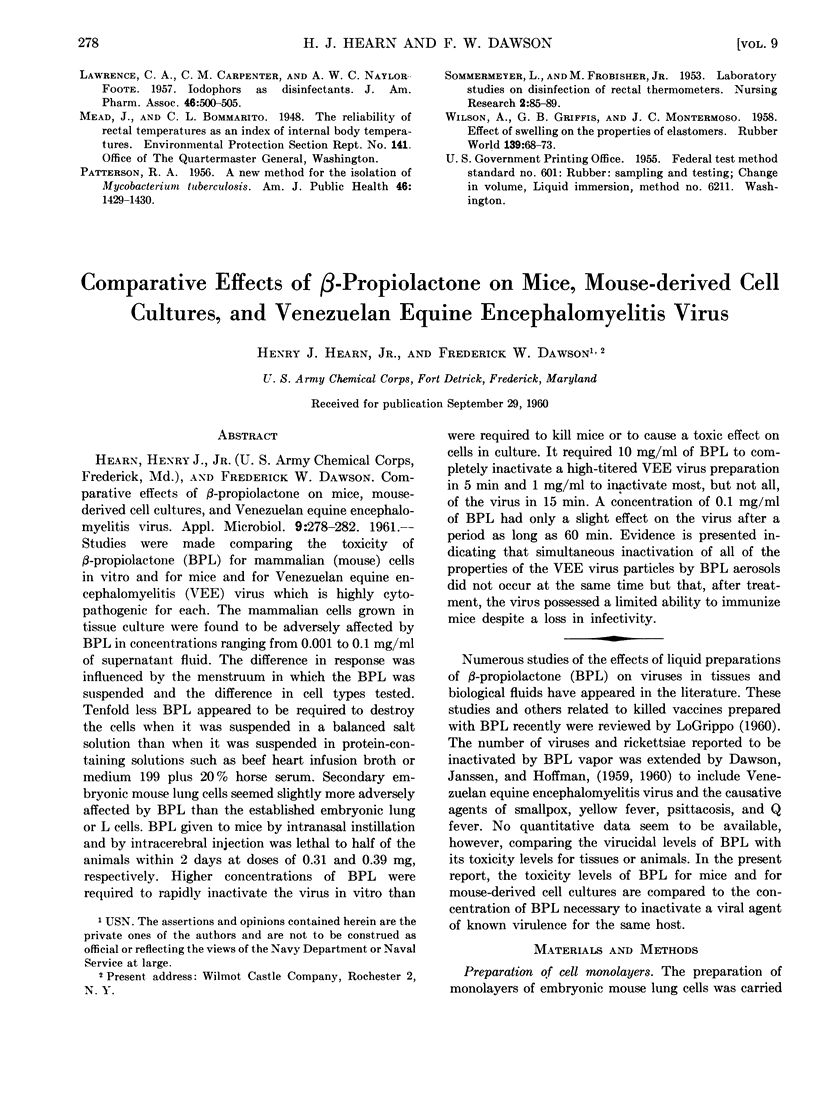
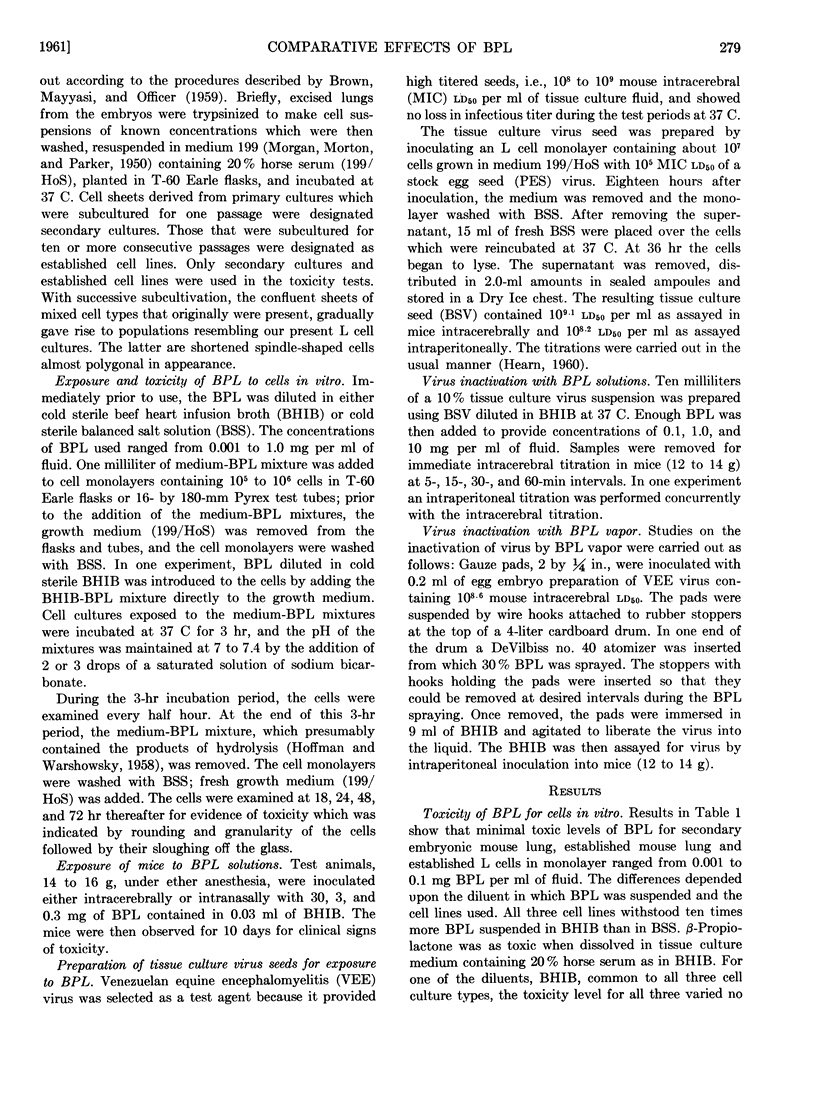
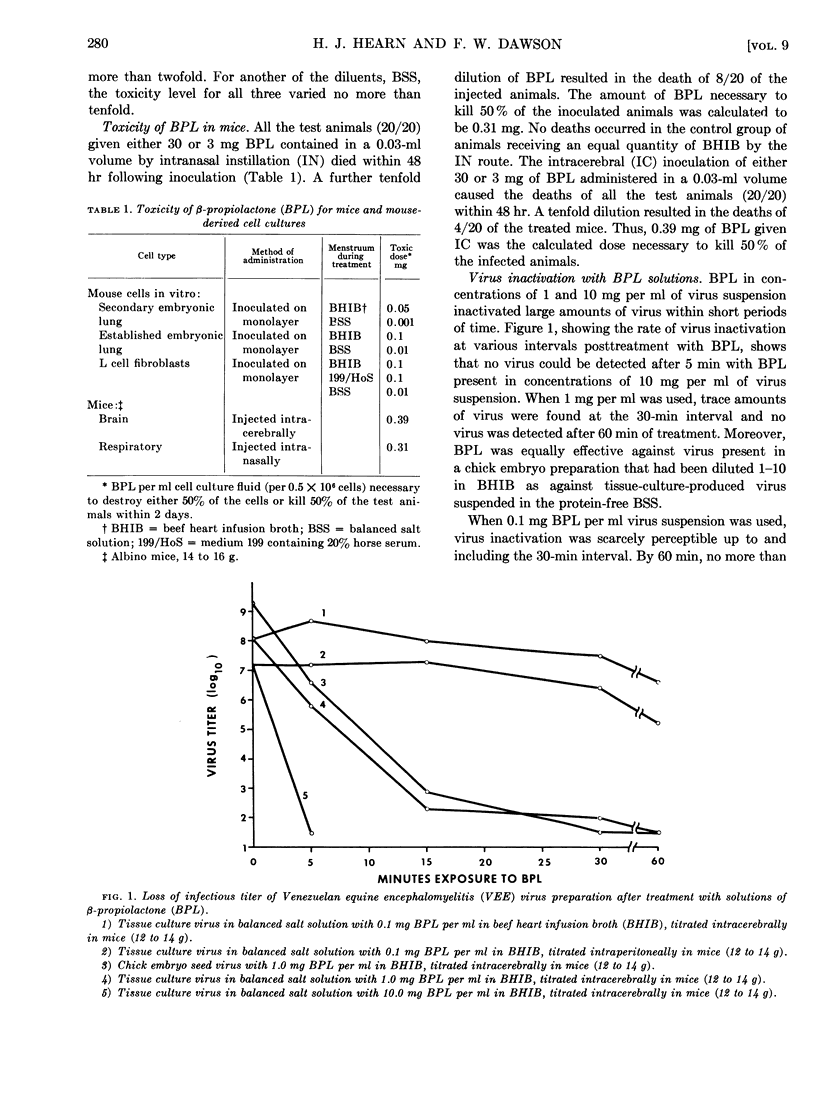
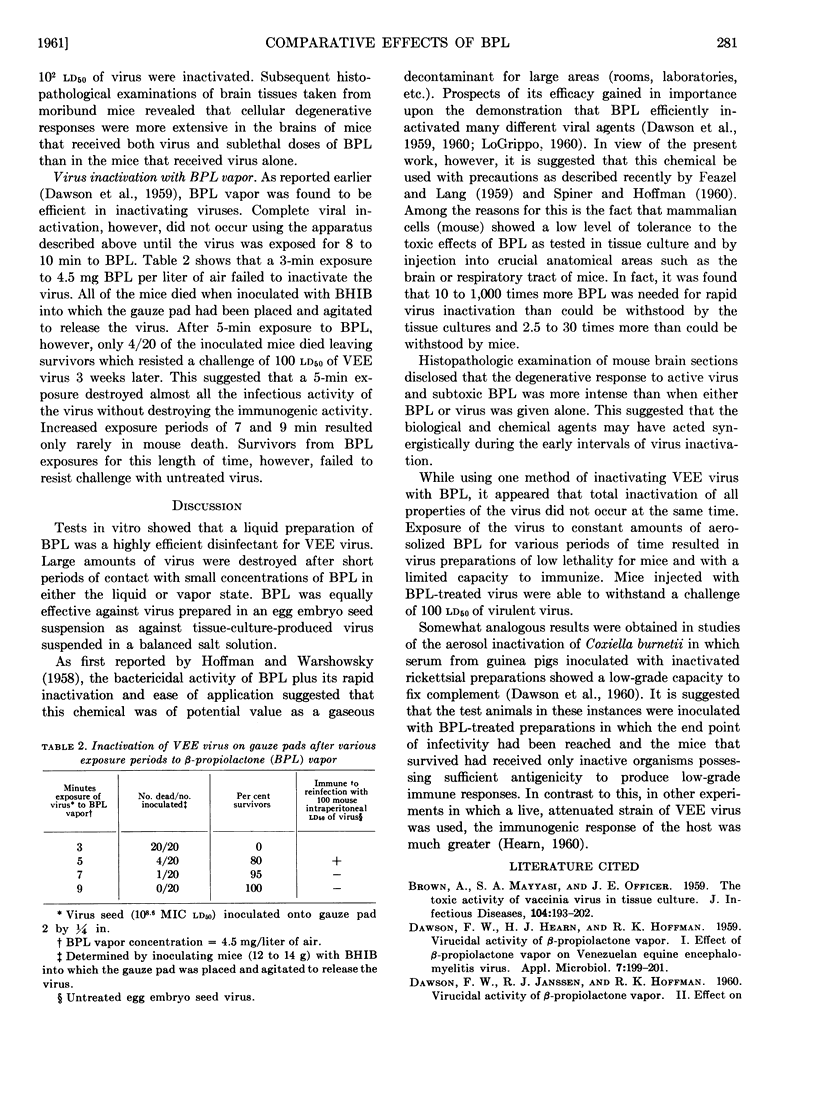
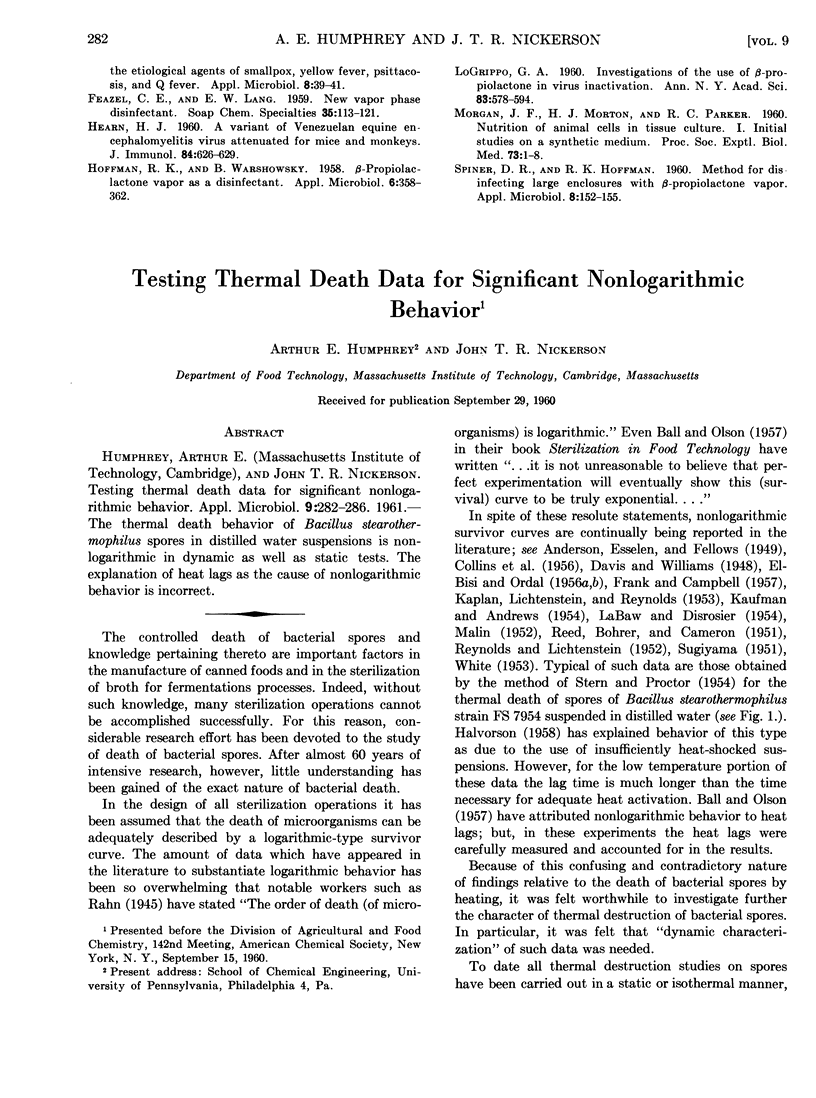
Selected References
These references are in PubMed. This may not be the complete list of references from this article.
- BROWN A., MAYYASI S. A., OFFICER J. E. The toxic activity of vaccinia virus in tissue culture. J Infect Dis. 1959 Mar-Apr;104(2):193–202. doi: 10.1093/infdis/104.2.193. [DOI] [PubMed] [Google Scholar]
- DAWSON F. W., HEARN H. J., HOFFMAN R. K. Virucidal activity of beta-propiolactone vapor. I. Effect of beta-propiolactone vapor on Venezuelan equine encephalomyelitis virus. Appl Microbiol. 1959 Jul;7(4):199–201. doi: 10.1128/am.7.4.199-201.1959. [DOI] [PMC free article] [PubMed] [Google Scholar]
- DAWSON F. W., JANSSEN R. J., HOFFMAN R. K. Virucidal activity of beta-propiolactone vapor. II. Effect on the etiological agents of smallpox, yellow fever, psittacosis, and Q fever. Appl Microbiol. 1960 Jan;8:39–41. doi: 10.1128/am.8.1.39-41.1960. [DOI] [PMC free article] [PubMed] [Google Scholar]
- HEARN H. J., Jr A variant of Venezuelan equine encephalomyelitis virus attenuated for mice and monkeys. J Immunol. 1960 Jun;84:626–629. [PubMed] [Google Scholar]
- HOFFMAN R. K., WARSHOWSKY B. Betapropiolactone vapor as a disinfectant. Appl Microbiol. 1958 Sep;6(5):358–362. doi: 10.1128/am.6.5.358-362.1958. [DOI] [PMC free article] [PubMed] [Google Scholar]
- LOGRIPPO G. A. Investigations of the use of beta-propiolactone in virus inactivation. Ann N Y Acad Sci. 1960 Jan 13;83:578–594. doi: 10.1111/j.1749-6632.1960.tb40931.x. [DOI] [PubMed] [Google Scholar]
- MORGAN J. F., MORTON H. J., PARKER R. C. Nutrition of animal cells in tissue culture; initial studies on a synthetic medium. Proc Soc Exp Biol Med. 1950 Jan;73(1):1–8. doi: 10.3181/00379727-73-17557. [DOI] [PubMed] [Google Scholar]
- SPINER D. R., HOFFMAN R. K. Method for disinfecting large enclosures with beta-propiolactone vapor. Appl Microbiol. 1960 May;8:152–155. doi: 10.1128/am.8.3.152-155.1960. [DOI] [PMC free article] [PubMed] [Google Scholar]


